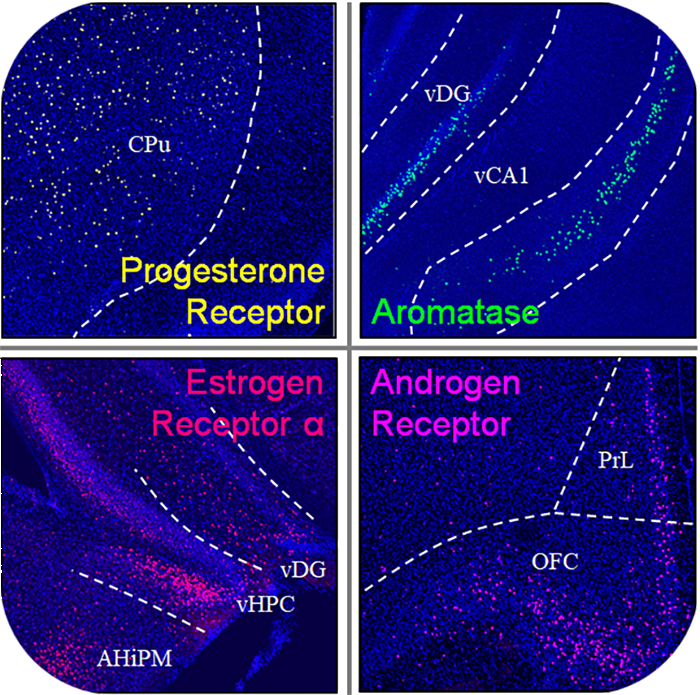Research Overview

The brain is comprised of a multitude of neural circuits that regulate countless neural functions and behaviors. Moreover, these distinct microscopic circuits are intermingled making it difficult to study one neural circuit without affecting unrelated circuits. The ability to study functionally distinct neural circuits in isolation is essential for our understanding of brain function as well as for development of future therapeutics that affect a targeted set of neurons without causing unwanted alterations to other intermingled neurons. To do this, neuroscientists utilize the fact that distinct neural populations within a brain region can be identified based on their neural projection patterns as well as expression of unique genes (exemplified by the different colored intermingled cells in the mouse brain image). Thus, modern neuroscientists are able to use advanced molecular genetic techniques to isolate and study gene-specific and projection-specific neural circuits.

In the Bayless Lab, we use molecular genetic techniques in mice to isolate and study neural circuits that underlie innate social behaviors, such as social approach, mating, and aggression. Our ultimate hope is that the detailed information gained from our mouse model studies can be used in the development of therapeutics designed to improve social processing skills in humans. One way we identify and isolate neurons essential for social behaviors is by leveraging the fact that many social behaviors present differently in male and female mice. Therefore, the neural circuits underlying these behaviors are likely to be sensitive to sex hormones. Sex hormones affect neurons by acting on sex hormone receptors. Sex hormone receptors are expressed in subsets of neurons throughout the brain. Therefore, we use expression of sex hormone receptors as an entry point to identify the neurons important for social behaviors in a specific brain region, and then we identify more selective genetic markers to better study the neural circuit function of those neurons.
We use a combination of cutting edge optical neural activity imaging and manipulation methods, behavioral analyses, and advanced sequencing techniques to better understand how social information is processed in the mouse brain. Our experiments advance our knowledge about the neurobiology of social behaviors in mammals by 1) identifying genetic markers that selectively label neurons that inform and guide social behaviors, then 2) elucidating the neural circuits in which these neurons function, and finally 3) understanding how factors, such as sex hormones, genes associated with human disorders, and aging, alter the functioning of these neural circuits. Detailed insights into how these factors alter social information processing will increase our understanding of how this process can go awry and what types of interventions could improve social processing skills in humans without altering other cognitive abilities.